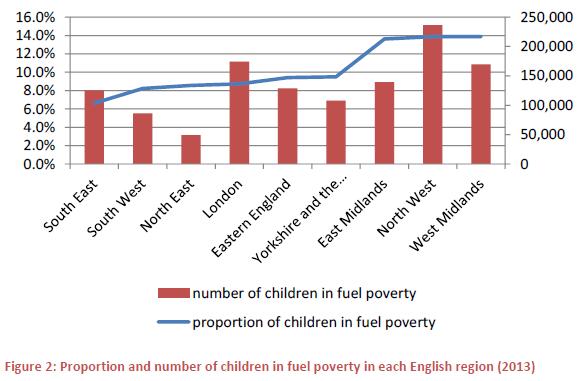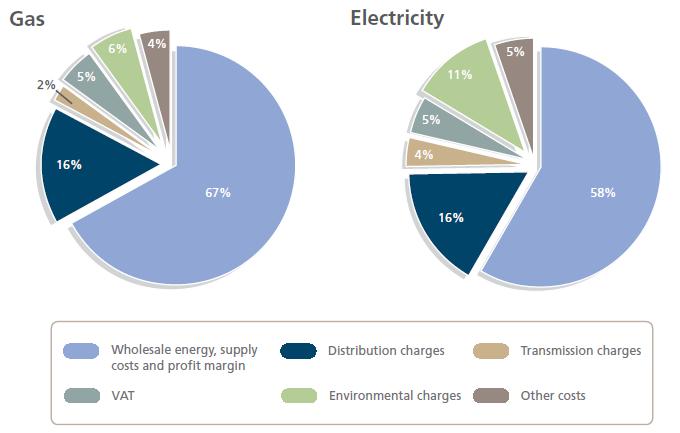Site search:
-
What’s new?
Energy for London Tags
Brent Buildings Camden Carbon Emissions CHP Cities Climate Adaptation Community Heating Community Initiatives Croydon Data DECC Decentralised Energy Distribution ECO Energy Costs Energy Efficiency Enfield FIT Fuel Poverty Funding Green Deal Hackney Haringey Housing Islington Lambeth Library Local Authorities Mayor Newham Ofgem Olympics Photovoltaics Planning RE:FIT RE:NEW Renewable Energy Retrofit Southwark Tower Hamlets Transport Waltham Forest Waste WestminsterEnergy Archives:
- February 2021 (1)
- January 2021 (15)
- December 2020 (15)
- November 2020 (9)
- October 2020 (3)
- August 2020 (5)
- July 2020 (3)
- June 2020 (4)
- April 2020 (10)
- March 2020 (5)
- February 2020 (2)
- January 2020 (3)
- October 2019 (1)
- September 2019 (4)
- August 2019 (2)
- July 2019 (1)
- August 2018 (1)
- November 2016 (8)
- October 2016 (8)
- September 2016 (2)
- August 2016 (8)
- July 2016 (14)
- April 2016 (12)
- March 2016 (16)
- February 2016 (8)
- January 2016 (4)
- December 2015 (1)
- November 2015 (1)
- October 2015 (16)
- September 2015 (3)
- June 2015 (1)
- May 2015 (1)
- April 2015 (1)
- March 2015 (1)
- February 2015 (1)
- January 2015 (1)
- December 2014 (18)
- November 2014 (4)
- August 2014 (8)
- July 2014 (7)
- June 2014 (25)
- May 2014 (8)
- April 2014 (4)
- March 2014 (12)
- February 2014 (7)
- January 2014 (13)
- December 2013 (11)
- November 2013 (15)
- October 2013 (15)
- September 2013 (18)
- August 2013 (5)
- July 2013 (20)
- June 2013 (33)
- May 2013 (8)
- April 2013 (16)
- March 2013 (25)
- February 2013 (14)
- January 2013 (20)
- December 2012 (23)
- November 2012 (23)
- October 2012 (25)
- September 2012 (14)
- July 2012 (12)
- June 2012 (43)
- May 2012 (20)
- April 2012 (8)
- March 2012 (40)
- February 2012 (39)
- January 2012 (40)
- December 2011 (22)
- November 2011 (40)
- October 2011 (33)
- September 2011 (48)
- August 2011 (40)
- July 2011 (58)
- June 2011 (41)
- May 2011 (80)
- April 2011 (38)
- March 2011 (33)
- February 2011 (25)
- January 2011 (24)
- December 2010 (3)
- November 2010 (7)
- October 2010 (6)
- September 2010 (7)
- August 2010 (1)
- July 2010 (2)
- June 2010 (4)
- May 2010 (1)
- March 2010 (3)
- February 2010 (3)
- December 2009 (5)
- November 2009 (2)
- October 2009 (3)
- July 2009 (3)
- June 2009 (1)
- April 2009 (1)
- March 2009 (1)
- February 2009 (1)
- January 2009 (1)
- December 2008 (2)
- October 2008 (1)
- September 2008 (1)
- July 2008 (1)
- March 2008 (2)
- January 2008 (2)
- October 2007 (1)
- September 2007 (3)
- July 2007 (1)
- March 2007 (1)
- February 2007 (3)
- November 2006 (3)
- August 2006 (1)
- February 2006 (1)
- May 2005 (1)
- February 2004 (1)
Library
London’s Energy Future 2020
 June 2013: The Mayor has set out priorities for the capital over the following decade in a new publication 2020 Vision – The Greatest City on Earth:Ambitions for London. Examples of some of the challenges highlighted in the accompanying press release include that “London’s population will hit ten million by 2030. London also needs 400,000 new homes in the next ten years alone.”
June 2013: The Mayor has set out priorities for the capital over the following decade in a new publication 2020 Vision – The Greatest City on Earth:Ambitions for London. Examples of some of the challenges highlighted in the accompanying press release include that “London’s population will hit ten million by 2030. London also needs 400,000 new homes in the next ten years alone.”
Despite the Mayor stating in the report that “The country as a whole is facing an energy crisis” (see below), disappointingly, across the 84 pages of the report, little is said in relation to practical measures the Mayor will undertake in helping secure London’s energy requirements to 2020 and beyond. There is also no specific reference at all to climate change in the report or how the capital may need to adapt to changed weather patterns. The ‘Securing our Energy Supplies’ section (p44) sets out many of the problems – but few future actions:
“New homes and new transport links will put pressure on other forms of infrastructure, notably water, sewage and energy. The country as a whole is facing an energy crisis, as nuclear power stations reach the end of their lives and as coal fired stations are closed to comply with EU regulations.
For too long London has been reliant solely on the National Grid and we need six new £40m substations urgently. It is time to take much bolder steps towards self-sufficiency. We are reducing wasted energy – retrofitting tens of thousands of buildings and helping to reduce fuel bills.
London’s CO2 emissions have actually fallen by 13.7 per cent since 2000, and are now back at 1990 levels. Our retrofitting schemes have so far improved the efficiency of 111 public buildings and 82,000 homes.
By 2020 we must have in hand a project to retrofit every badly insulated home in the city, and every badly insulated office -not just to save energy, save CO2 but to save Londoners’money in tough economic times. As they have discovered in Germany, these retrofitting schemes can be formidable creators of employment.
A building the size of the Shard can use as much electricity as Colchester – and so we need to meet London’s energy needs as independently as possible. By 2025 we intend to supply 25 per cent of the city’s power from decentralised energy generation within London itself – and it is clearly right that these plants should run, as far as possible, on renewable fuels.
It is a little known fact that TfL has its own power station in Greenwich, and we are now working with the private sector to convert that station to provide heat and power from low carbon energy sources; and this could be the first of many.” (for more on this see here and here)
There is, not surprisingly, a strong emphasis on the creation of new jobs for Londoners running as major thread through the report. The Mayor has previously highlighted the opportunity presented to London through the adoption of low carbon programmes – a 2011 study for the Mayor suggesting up to 14,000 jobs could be created. Boris’s 2012 Mayoral election manifesto stated that 4,300 ‘green’ jobs could be created through his retrofitting and decentralised energy programmes alone. Despite the mention in the report (see above) on how Germany has managed to boost employment by adopting major energy efficiency retrofit schemes, though there are 55 references to jobs in the ‘2020 Vision’ document, there is no single specific mention to how ‘green jobs’ will be further promoted.
Finally, the odd factlet stated in the report comparing the electricity use in Colchester to The Shard (see above) was first used in a column the Mayor wrote in the Daily Telegraph in December 2012…and was disputed soon after.
Making London’s Private Rented Sector Fit for Purpose
June 2013: The London Assembly Housing and Regeneration Committee has published findings of their year-long inquiry into London’s private rented sector housing. Their report – Rent Reform: Making London’s Private Rented Sector Fit for Purpose – includes 20 wide-ranging recommendations to the Mayor looking to improve the situation in London for what – the Committee calls – “Generation Rent”. Included amongst these is one specifically in relation to the energy efficiency of private rented sector homes.
Recommendation 9 states that the “Mayor needs to ensure that minimum energy efficiency standards are achieved in the private rented sector by 2018, in accordance with the Energy Act (2011), and that sufficient standards are achieved by 2025 to meet the targets for domestic carbon dioxide emissions set out in the Mayor’s Climate Change Mitigation and Energy Strategy. To do this the Mayor should identify properties in the private rented sector that could benefit from the Government’s Green Deal energy efficiency programme and inform landlords once formal offers become available. The Mayor should also ensure that landlords also have access to ECO funding streams to help ensure their property is energy efficient so tenants’ housing costs can be reduced.”
The Mayor published in December 2012 a new ‘London Rental Standard‘ setting out his proposals to help improve London’s private rented sector. The Committee however are fairly dismissive of the standard stating that “The Mayor has made a commitment to improve the private rented offer in London through a new London rental standard that landlords are encouraged to sign up to. But a majority of the Committee believes that this standard does not offer anything new – it reflects current basic legal requirements and existing accreditation schemes.” [p9]
This is certainly true in relation to standard’s requirement on energy efficiency – which is exactly the same as those set out in the Government’s Energy Act 2011 (see an earlier post here for a full explanation – including why the requirement should be more demanding). But – confusingly- despite the committee’s criticism, their recommendation 9 does not look to go any further on energy efficiency than that set out by in the Housing Standard/Energy Act either…?
The committee also sets out that “One in four Londoners now rents privately and there have been significant rent rises in the capital. Median rents in London rose last year by 9 per cent to £1,196 per month.” Recent work by the Energy Bill Revolution has highlighted the impact of rent increases in the private rented sector. Whilst the Mayor has as yet not made an assessment of the impact of such rent increases on London’s fuel poor, the Mayor has reported that his RE:NEW programme is paying particular attention to delivering energy efficiency measures to the private rented sector.
FOE Cities & Carbon briefing
May 2013: Short briefing from Friends of the Earth entitled: ‘Cities – a synthesis of literature on the topic’ – which includes an outline of recent work undertaken on the impact of cities on carbon emissions (direct link here).
New London Health Board
May 2013: The newly constituted London Health Board met for the first time on 20 May 2013. A press release sets out that the Board is a “partnership between local government, the NHS and the Mayor of London, which has been established to provide leadership on health issues of pan-London significance, where this adds value to decisions, agreements and action at local level.” A useful evidence paper was presented at this first meeting setting out some useful information on ‘Health in London‘. None of the papers indicate that the Board are to address issues relating to health and its relationship to cold homes or fuel poverty, however, this is only their first meeting…
The London Climate Change Partnership recently published ‘‘Linking Environment and Health: A resource for policy and decision makers working on Joint Strategic Needs Assessment’. The LCCP sets out that “Given the importance of the Joint Strategic Needs Assessment (JSNA) in shaping priorities for health and social care investment it is essential that a proper assessment of such environmental factors, which impact on population health and health inequalities, are given real attention and emphasis. Health and Well-being Boards and the Boards of health and care providers will also want to take full account of environmental issues and community capacity when addressing quality and finance challenges.”
The key study looking into these issues was undertaken by the UCL’s Institute of Health Equity. Their key report ‘The Health Impacts of Cold Homes and Fuel Poverty‘ was published in 2011 and can be downloaded here.
Thames Tideway Tunnel Energy and Carbon Footprint
April 2013: Thames Water recently submitted its 50,000 page (!) planning application for the development of the Thames Tideway Tunnel. It’s not surprisingly a big project …requiring the construction of a 15 mile tunnel to run 75 metres beneath the Thames riverbed through central London and would capture storm sewage from overflow points along the river. An online video on the project’s website can be viewed here.
The Tunnel has been designated a Nationally Significant Infrastructure Project (NSIP) and as such its application must be submitted to the National Infrastructure Planning Inspectorate. And it is on their website that an Energy and Carbon Footprint Report for the project can be found ( here – and directly downloadable here).
This report sets out an energy and carbon footprint assessment for the Thames Tideway Tunnel considering the CO2 equivalent emissions (CO2e) for both the construction and operation of the tunnel. The results are presented within Section 5 of the report, which provides details on the CO2e associated with construction materials, transport and logistics, worksite construction activities and operational energy demand. The assumptions which underpin the assessment, and the raw data which informs it, is also provided within the appendices of the report.
The report sets out that “the total carbon footprint, in the decarbonised scenario, of some 840,000 tCO2e (tonnes of carbon dioxide equivalent)the principal impact from the project is the GHG emissions caused by construction of the infrastructure, in particular embodied carbon in materials, being approximately 84% of the total emissions, with emissions from construction plant and machinery (construction worksite activities eg tunnel boring and emissions from plant and machinery) being around 10%of the total emissions. Emissions during the 120 year operational life of the tunnel represent approximately 2.5% of the total GHG emissions. The transport of excavated material and construction materials represents approximately 3.5% of the total carbon footprint of the project.” Much is placed on overall future electricity grid decarbonisation to help reduce the CO2 footprint of the project.
The PM’s energy speech – that wasn’t…
April 2013: Back in February, at the launch of DECC’s ‘Energy Efficiency Mission’ in London – the special guest to the event was the Prime Minister himself who made a short speech on the key importance of energy efficiency to the economy. As the following Association of Conservation (ACE) post points out, the PM’s speech was – strangely – never mentioned, released or press released by Number 10.
However – following a Parliamentary Question earlier this week, the speech has now finally been made available and can be viewed here – ‘Why Energy Efficiency Matters’.
The Future of Heating in London
March 2013: The Government’s Future of Heating policy paper released yesterday gives prominent coverage to activities underway in London to promote the use of decentralised energy systems through the use of district heating and high efficiency Combined Heat and Power (CHP) systems. The paper includes the following:
- A case study of The Shard CHP heat network [p41]
- How Islington Council, the GLA and UK Power Networks are working together on “a proposed extension of the existing Bunhill heat network that will capture and use identified sources of waste heat produced within the area, such as from a nearby electricity sub-station. This project will help London and its boroughs to identify, capture and make use of urban sources of waste heat and play an important part in developing their lower carbon, lower temperature heat networks ofthe future” [p43] Continue reading…
Posted in Library, News
Leave a comment
Energy Efficiency in London
March 2013: Helpful new briefing paper presented to the London Councils Leaders Committee on ‘Energy Efficiency in London’, which highlights:
- The bulk of recent funding from DECC to the GLA (see here and here) will be spent on replacing/repairing boiler and heating systems within the participating boroughs, as well as improving the insulation properties of homes, utilising the framework contracts already in place from the RE:NEW scheme. A smaller part of the funds will be spent on both domestic and business Green Deal assessments.
- Almost one in five London households is in fuel poverty, currently defined as householders spending more than 10 per cent of their income on energy to keep warm. This is significantly higher than the national average as a result of a greater proportion of older and hard-to-treat homes. The problem is likely to get worse too,with one in four households projected to be in fuel poverty by next year as a result of rising energy costs and the UK’s homes being some of the most energy inefficient in Europe.
- London Councils is actively pursuing Government to include measures to simplify tariffs and provide clearer information to consumers. We are lobbying for more competition to enable suppliers to offer market-beating tariffs in cases, such as the Collective Energy Switch currently pursued by London Councils and to ensure that fuel poor households will continue to benefit from centrally funded measures for retrofitting activities.
- Due to the higher costs of delivering retro-fitting in London, there is a danger that London will lose out on its fair share of ECO funding, as it did under the CERT scheme. London Councils, with the GLA, lobbied for regional targets, which Government did not accept and has resulted in adapting the RE:NEW work to include a larger element of working with retrofitting providers to address some of their main concerns (local planning matters, parking issues and sharing of benefits claimants data). The Energy Bill, however offers a new opportunity to reinforce this point, which London Councils is actively pursuing.
- Due to the types of homes in London and the prevalence of fuel poverty, vulnerable households are unlikely to meet the golden rule of the Green Deal without further financial support.
Posted in Energy Efficiency, Library, News
Tagged ECO, Energy Efficiency, Fuel Poverty, Green Deal
Leave a comment
Intelligent energy integration for London’s decentralised energy projects
 15 March 2013: “The Mayor is interested in how decentralised energy can form part of a Smart energy system to provide more efficient, sustainable and resilient supply. He has commissioned a technical and market analysis of the emerging opportunities to use smart technologies and services to integrate the production and use of heat and power within London. This considers how an intelligent energy system might evolve in London in the period up to 2050, the key technologies that could be deployed and the organisational structures required.”
15 March 2013: “The Mayor is interested in how decentralised energy can form part of a Smart energy system to provide more efficient, sustainable and resilient supply. He has commissioned a technical and market analysis of the emerging opportunities to use smart technologies and services to integrate the production and use of heat and power within London. This considers how an intelligent energy system might evolve in London in the period up to 2050, the key technologies that could be deployed and the organisational structures required.”
Download the report “‘Smart City’ – Intelligent energy integration for London’s decentralised energy projects” here. Will return to some of the outputs of this report in a future post.
Posted in Decentralised Energy, Library, News
Tagged CHP, Community Heating, Decentralised Energy, Smart Grid
Leave a comment
Number of Fuel Poor Children In London
March 2013: New analysis undertaken for the Energy Bill Revolution by the Association of Conservation of Energy (ACE) “provides a snapshot of families and (dependent) children in fuel poverty at the start of this year. It provides high-level estimates for the UK, England and the Devolved Nations. It then goes on to explore the nature and composition of fuel poverty amongst families and children, specifically in England.”
London of course has a high use of private rented sector accommodation and the research sets out that ” As with overall fuel poverty, children who live in privately rented accommodation are worst hit. By tenure, the proportion of children in fuel poverty is presented in Table 4.
 “In 2010, average annual housing costs for families with dependent children in England – whom we consider to be in fuel poverty today, were:
“In 2010, average annual housing costs for families with dependent children in England – whom we consider to be in fuel poverty today, were:
- Local authority housing: £3,800
- Housing associations: £4,200
- Owner occupiers: £4,500
- Private rental: £7,400
This only hints at the additional difficulties faced by fuel poor families who are renting their accommodation privately, and provides a clear impetus for where resources to tackle fuel poverty needs to be prioritised.”
The report calculates that some 174,000 children – or 8.7% of children in London – are deemed to be fuel poor – illustrated below. Much more of interest to be viewed in the report.
Posted in Library, News
Leave a comment
FITs – Tariff Table 1 April 2013 PV Only
February 2013: Ofgem have posted an updated list of tariff rates under the Feed-in Tariff scheme for PV installations. A lot more involved now! Download here.
Household energy bills explained
18 January 2013: Ofgem have updated their useful factsheet on what makes up household energy tariffs (download here).
- It reflects gas and electricity prices in December 2012
- The average gas bill for a standard account is £811 and for electricity it is £531
- The average bills above are based on average annual consumption figures of 3,300 kWh for electricity and 16,500 kWh for gas
- Environmental costs amount to 6% of gas bills and 11% of electricity bills – and currently amount to around £82 on a total energy (gas & electricity) annual bill.
Other references that go into this household energy bills in more detail are:
- DECC’s Quarterly Energy Prices
- Energy UK’s Energy supply margins reports undertaken by NERA



